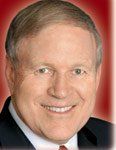Article
Shortage of urologists requires creative solutions
The looming shortage of U.S. physicians is a complex, multifaceted problem-and one that faces urology as much, if not more than, other specialties.
The looming shortage of U.S. physicians is a complex, multifaceted problem-and one that faces urology as much, if not more than, other specialties.

In the1970s, the United States had one urologist for every 35,000 patients. By 2020, when the population reaches 345 million, 1,500 additional urologists will be needed to maintain that ratio. Based on the current demographics of practicing urologists, we could see 700 fewer urologists in 2020 than we have now, so that the shortfall may actually be closer to 2,000.
Doctor visits made by the Medicare population occur at a rate 2-½ times higher than that of the next-youngest age group. In addition, an increasingly aging population means greater demand for urologic procedures-expected to increase by 33% by 2020.
Is the supply of new residents on track to meet growing demand? According to recent AUA data, 247 urology residency positions were offered in 2008, an increase of 17 slots from 2000 and six more slots than in 2007. Of those residents who matched in 2005, 23% were female, compared to only 14% in 2004. More than 66% of females who have applied for residency slots over the last 9 years have matched. The percentage of females accepted for and entering residencies and practice is on a definite upswing.
Aside from the actual number of physicians, we must consider physicians' productivity in determining future workforce needs. It's safe to say that younger physicians are rightfully more interested in family life and working fewer hours than older generations were. While a positive trend, this represents a de facto decrease in productivity. Those physicians primarily responsible for raising young children may have fewer hours to devote to medical practice.
Is there a solution to the growing imbalance in physician supply and demand? We need to consider increasing the number of residency slots, but this is a lengthy, expensive proposition. The process of obtaining approval from an individual medical center and the Residency Review Committee and implementing the training would result in at least a 10-year hiatus before newly trained residents entered the workforce.
More important is the question of who will pay to educate more residents. Likely not the federal government, which is consumed with large-scale domestic and global problems. It is time to consider innovative approaches. Perhaps large third-party payers or industry could pay for newly trained physicians to become "indentured servants" who would work short-term for these companies in exchange for medical training. Perhaps these companies could partner with medical schools and/or states to help pay for training, and maybe even the students themselves would need to contribute a certain amount.
The physician shortage is a problem with no simple answer. Ultimately, we must consider the needs of our patients above all else. Having significantly too few urologists is not good for urology or society. Our own success will be measured by how well we meet patient demand for high-quality, convenient patient care.
Dr. McCullough is in private practice in the Kernersville, NC, office of Alliance Urology Specialists of Greensboro, NC.




